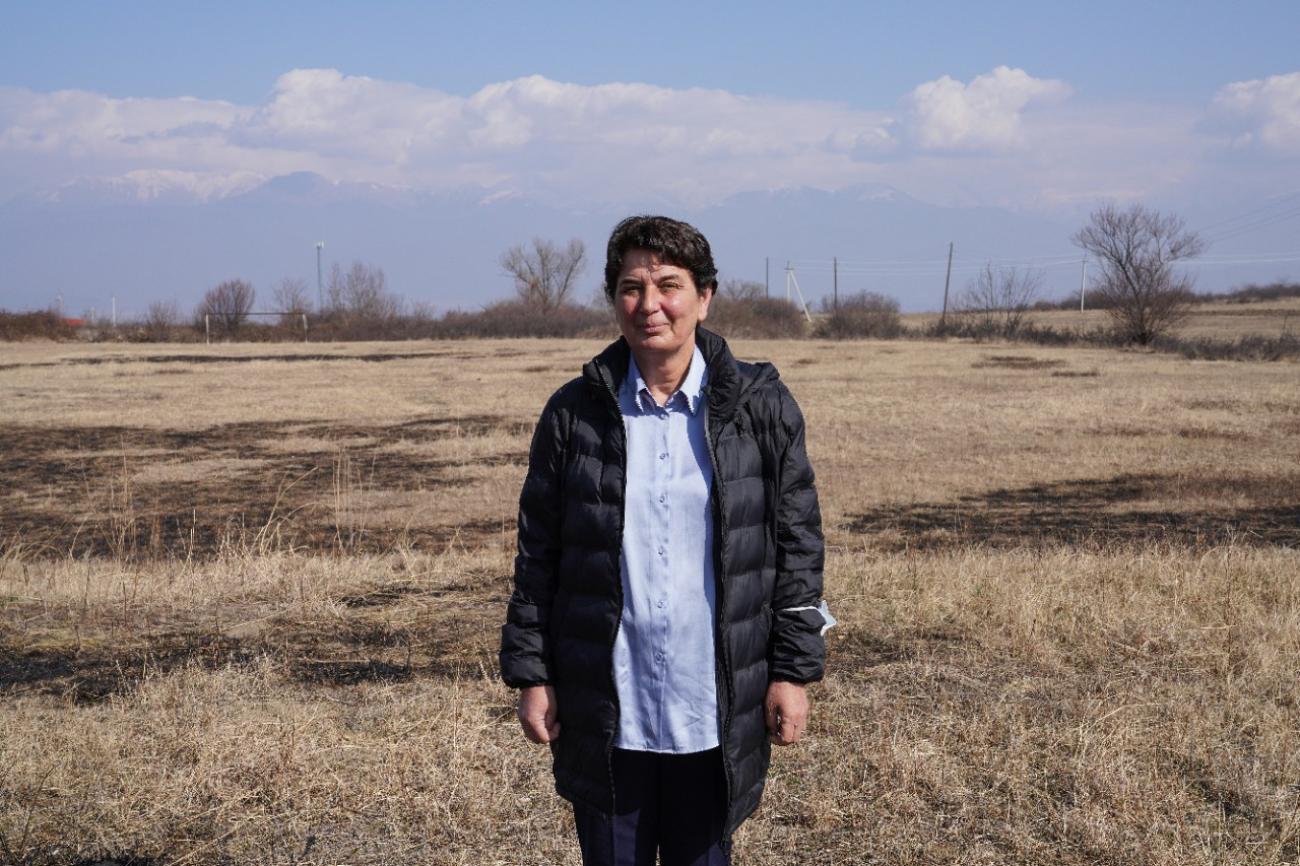Standing up to climate change

Georgian women fuel community-based climate action
Almost 65 percent of Georgians believe that individuals can stand against climate change; 36 percent are not convinced that personal actions matter. Courageous and determined women activists, like Shorena Chapurishvili from the small Georgian town of Akhmeta, show by example that every person can contribute to climate-proofing our world.

Photo: Anka Gujabidze/UNDP
The hidden threat
It is hard to picture a devastating flood along the Zemo Khodashnis Khevi’s dry riverbed. The landscape looks so peaceful and arid; there are no signs of a roaring deluge washing away bridges and houses. Yet, this small river, which does not even exist for most of the year, turns deadly every spring, flooding nearby villages and destroying livelihoods.
Chapurishvili, a local climate activist, tells us that floods have become more frequent and severe over the years. “This river used to be much smaller only 10 years ago. You can see the remains of walls that would restrain it before. Now, they are almost in the centre of the riverbed.”
According to Chapurishvili, pastures and farming plots are at the highest risk when the river floods; residential houses and roads in three villages are under threat too. In this area, recurrent floods affect the livelihoods of more than 2,100 people. But the damage extends beyond agricultural, infrastructure and personal loss. One of the river branches flows near the Alaverdi Cathedral, a majestic 11th-century monument that has been nominated for UNESCO’s World Heritage List. “When the main river floods, its branch overflows too. If it reaches Alaverdi, it will damage the Cathedral’s ancient walls and courtyard,” Chapurishvili says.

Photo: Anka Gujabidze/UNDP

Photo: Anka Gujabidze/UNDP
When water turns into a flood
Most of Georgia’s 26,060 rivers are mountain streams, full of life and beauty. They feed lush forests and fertile plains, support unique ecosystems and biodiversity and supply people with water, energy and a livelihood. Yet once in a while, this beauty and power turn against people.
River flooding, rockslides, landslides and mudslides are the chief source of natural disasters in Georgia. Extreme flood events cost the country over US$190 million per year. Scientists estimate that climate-driven disasters could cost Georgia as much as $12 billion over the next decade, almost 80 percent of Georgia’s current annual GDP.
In 2019, Georgia launched a nationwide programme to enact policies and make the investments needed to adapt to climate change and protect people and the economy from climate-driven disasters. The seven-year initiative, a joint venture between the government and the United Nations Development Programme (UNDP), draws on $74 million provided by the Green Climate Fund and the governments of Georgia, Sweden and Switzerland.
The programme is set to introduce climate adaptation solutions, including hydrometeorological observation networks, early warning systems and protective infrastructure, in the basins of 11 Georgian rivers where the disaster risk is especially high. This will provide direct protection to 1.7 million people — 46 percent of the population.
The programme also improves climate change awareness and education and assists local communities to develop and introduce climate-savvy solutions to better protect themselves from floods and other extreme weather events.
Villages alongside Zemo Khodashnis Khevi and many other locations across the country are at the centre of this work.

Photo: Anka Gujabidze/UNDP
The power of people
“Reinforcing riverbanks and establishing hydrometeorological monitoring is extremely important, as is letting people know what to expect and how to act during floods. This will help reduce losses and better protect communities,” said Chapurishvili.
This year, UNDP provided her with a support grant to establish a community-based rapid response squad that will serve three villages alongside Zemo Khodashnis Khevi, informing people what to do to stay safe before, during and after a flood.
“We are working with local councils and schools and engaging teachers and community organizations. Women and youth can play a game-changing role. They form a public opinion, influence their families and are very effective in spreading the message,” said Chapurishvili.
She has a point here; women drive most of the local climate education projects supported by UNDP and Georgia’s Ministry of Environmental Protection and Agriculture.
Chapurishvili’s work has sparked the interest of surrounding villages. Self-governance representatives, schools and citizens are ready to join or support the emergency response squad when it becomes fully operational this spring. Her work — and the efforts of many other climate activists across Georgia — holds the promise that local solutions and initiatives will help prepare people for climate change impacts and inspire them to work together to build a stronger and more resilient society.


